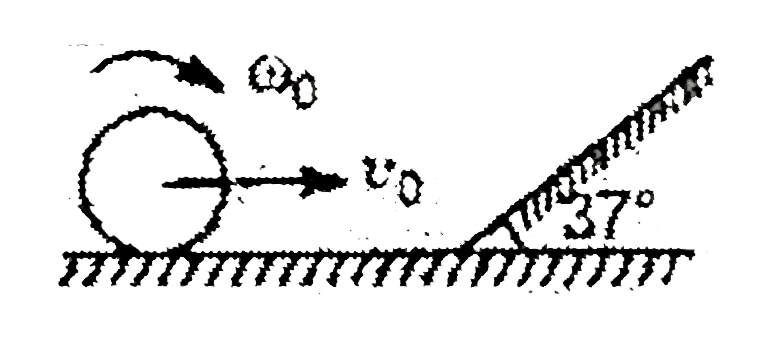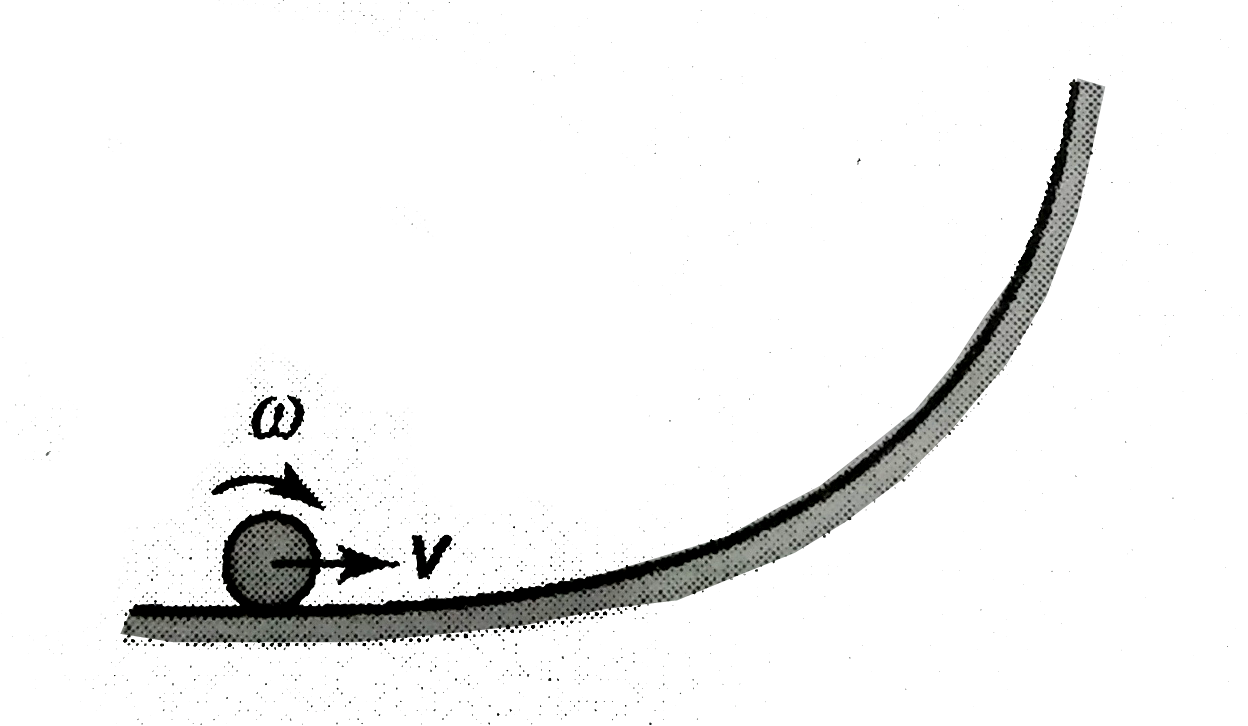A solid sphere is rolling on a frictionless surface, shown in figure with a translational velocity vm/s. If it is to climb the inclined surface then v should be :

≥√2gh
2gh
≥√107gh
107gh
The correct Answer is:C
( c) From law of conservation of energy can neither be created nor be destroyed but it remains conserved In the given case the sum of kinetic energy of rotation and translation is converted to potential energy.
Also moment of inertia of disc is
I=25MR62
12mv2Translatonal kinetic energy+12Iω2Rotationale≠rgy=mghPotential energy
⇒12mv2+12(25MR2)v2R2=mgh
where v=Rω,ω = angular velocity
⇒710mv2=mgh
⇒v=√107gh
Hence, to climb the inclined surface the velocity should be greater than √107gh.

Topper's Solved these Questions
- BOOK - A2ZCHAPTER - ROTATIONAL DYNAMICSEXERCISE - Chapter Test29videos
ROTATIONAL DYNAMICS
- BOOK - A2ZCHAPTER - ROTATIONAL DYNAMICSEXERCISE - NEET Questions59videos
ROTATIONAL DYNAMICS
- BOOK - A2ZCHAPTER - PROPERTIES OF MATTEREXERCISE - Chapter Test29videos
PROPERTIES OF MATTER
- BOOK - A2ZCHAPTER - THERMAL PROPERTIES OF MATTEREXERCISE - Chapter Test30videos
THERMAL PROPERTIES OF MATTER
Similar Questions
Knowledge Check
- Question 1 - Select One
A solid sphere is rolling on a frictionless surface, shown in figure with a translational velocity vm/s. If is to climb the inclind surface then v should be :
 A(1)≥√107ghB≥√2ghC2ghD107gh
A(1)≥√107ghB≥√2ghC2ghD107gh - Question 2 - Select One
A solid sphere is rolling down an inclined plane. Then the ratio of its translational kinetic energy to its rotational kinetic energy is
A2.5B1.5C1D0.4 - Question 3 - Select One
A sphere is moving on a smooth surface with linear speed v0 and angular velocity ω0. It finds a rough inclined surface and it starts climbing up:
 Aif v0>Rω0 friction force will act downwardsBif v0<Rω0, frictio force will act upwardsCif v0=Rω0 no friction force will actDif all above case friction will act upwards
Aif v0>Rω0 friction force will act downwardsBif v0<Rω0, frictio force will act upwardsCif v0=Rω0 no friction force will actDif all above case friction will act upwards
A solid sphere is rolling on a frictionless plane surface about the axis of symmetry. Find the rotational energy of the sphere. Also, find the ratio of rotational K.E. to total energy.
View SolutionA hollow sphere rolls without slipping the on the horizontal surface such that its translational velocity is v. Find that the maximum height attained by it on an inclined surface.
 View Solution
View SolutionWhen a solid sphere is rolling along level surface the percentage of its total kinetic energy that is translational is
View SolutionA ring, disc, spherical shell and solid sphere of same mass and radius are rolling on a horizontal surface without slipping with same velocity. If they move up an inclined plane, which can reach to a maximum height on the inclined plane?
View SolutionA solid cylinder rolls up an inclined plane of inclination θ with an initial velocity v. How far does the cylinder go up the plane ?
View Solution


